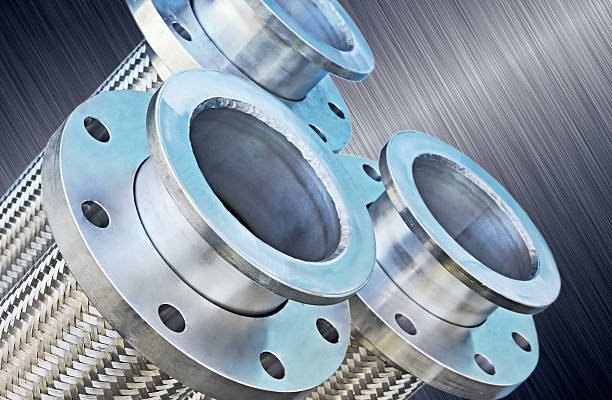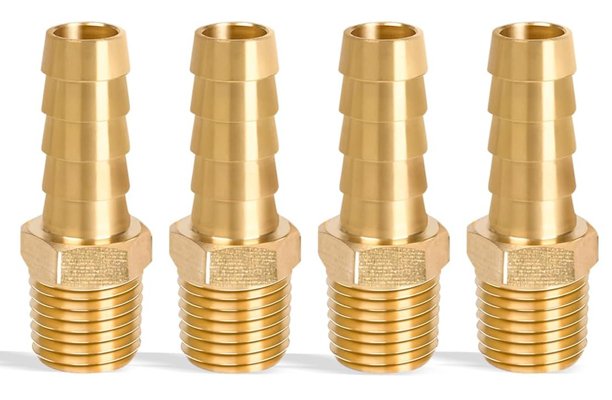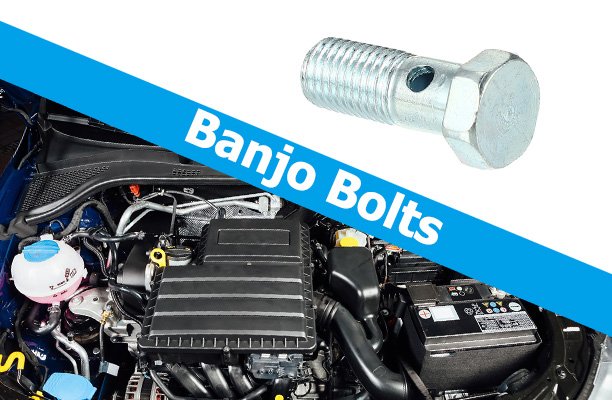Introduction to Hydraulic Flanges
What is a Hydraulic Flange?
A hydraulic flange is a specialized mechanical component designed to connect pipes, hoses, and other hydraulic components securely within a hydraulic system. It provides a leak-proof, high-pressure connection essential for fluid transfer in hydraulic circuits. Hydraulic flanges are commonly used where threaded or welded connections may not be sufficient due to the intensity of pressure or the need for easy maintenance.
Importance of Hydraulic Flanges in Fluid Power Systems

Hydraulic flanges play a crucial role in maintaining the safety and efficiency of fluid power systems. They ensure tight sealing, withstand high-pressure environments, and allow for modular system designs that simplify installation and servicing. Without hydraulic flanges, it would be challenging to achieve the durability and flexibility demanded by modern hydraulic systems.
Applications Across Industries
Hydraulic flanges are vital across several sectors, including construction equipment, industrial machinery, marine applications, oil & gas, aerospace, and agricultural machinery. They are widely adopted wherever hydraulic systems are expected to handle high pressures, extreme conditions, or frequent maintenance.
Types of Hydraulic Flanges
Split Flanges
Split flanges, also known as two-piece flanges, are designed to allow easy assembly and disassembly without disturbing the entire hydraulic system. They are commonly used where space constraints or maintenance requirements are significant.
SAE Code 61 and Code 62 Flanges
SAE flanges are standardized by the SAE J518 and ISO 6162 standards. Code 61 flanges are suitable for medium-pressure applications, while Code 62 flanges are built to handle high-pressure hydraulic systems. The difference primarily lies in the bolt pattern and pressure ratings.
Threaded Hydraulic Flanges
Threaded flanges offer a reliable method for connecting hydraulic systems without welding. They are frequently used in low to medium-pressure applications, where ease of assembly is a key concern.
Butt-Weld Hydraulic Flanges
Butt-weld flanges are welded directly to the hydraulic pipe, providing a robust and permanent connection. They are commonly used for high-pressure and critical applications where vibration or dynamic loads are prevalent.
Customized and Special-Purpose Flanges
Industries often require flanges customized to their specific hydraulic systems. These may include non-standard bolt patterns, unique materials, or special coatings to resist corrosive environments.
Materials and Design of Hydraulic Flanges
Common Materials
Hydraulic flanges are typically manufactured using carbon steel, stainless steel, or alloy steel. The material choice depends on the application’s pressure, temperature, and exposure to corrosive agents.
Corrosion Resistance and Durability
Stainless steel flanges are often preferred in marine, offshore, or chemical industries due to their superior corrosion resistance. Carbon steel flanges, while less corrosion-resistant, offer excellent strength at a more economical cost when combined with protective coatings.
Design Features and Pressure Ratings
Hydraulic flange designs incorporate various factors such as bolt hole alignment, O-ring grooves, and flat-faced or raised-face surfaces to ensure leak-free connections. Pressure ratings may vary from 3,000 PSI to over 6,000 PSI depending on the type and material of the flange.
Hydraulic Flange Standards and Certifications
SAE J518 / ISO 6162 Standards
One of the most recognized standards for hydraulic flanges is the SAE J518, also harmonized with ISO 6162. These standards define the dimensions, pressure ratings, bolt patterns, and connection styles of hydraulic flanges. The two main classifications under this standard are Code 61 (medium pressure) and Code 62 (high pressure), which are essential for selecting the appropriate flange for specific hydraulic applications.
DIN and ISO Flange Standards
Beyond SAE, DIN (Deutsches Institut für Normung) and ISO (International Organization for Standardization) standards also govern hydraulic flange specifications globally. European and international projects often rely on DIN 2353 or ISO 8434-1 standards for tube connectors and flanges. These standards ensure compatibility, safety, and global interchangeability of hydraulic systems.
Industry Certifications for Quality Assurance
Reliable hydraulic flange manufacturers often hold certifications such as ISO 9001 for quality management and ISO 14001 for environmental management. Additionally, flanges used in specific industries like oil & gas may require API or DNV certifications to comply with rigorous safety and performance standards.
Hydraulic Flange Connection Techniques

Bolt Patterns and Hole Alignment
Proper bolt pattern and hole alignment are critical for achieving a leak-free and secure hydraulic flange connection. Standard flanges come with pre-defined bolt hole patterns to match mating components. Ensuring correct alignment during assembly minimizes stress on the flange and reduces the risk of failure under pressure.
O-Ring Face Seal (ORFS) Connection
ORFS connections are widely used with hydraulic flanges due to their superior sealing capabilities. An O-ring is seated within a groove on the flange face, creating a highly effective seal that prevents leaks, even under dynamic loads or high-pressure conditions.
Welded vs Bolted Connections
While bolted flanges offer flexibility and ease of maintenance, welded flanges are preferred for permanent installations and high-vibration environments. The choice between welded and bolted connections depends on factors like system design, operating pressure, and serviceability.
Avoiding Leakage and Failure in Hydraulic Flange Joints
To prevent leakage, it is essential to follow torque specifications, use proper sealing methods (such as ORFS), and conduct thorough inspections. Improper bolt tightening, damaged O-rings, or misaligned components are common causes of leakage or flange failure.
Hydraulic Flange Installation Process
Tools Required for Flange Installation
Typical tools for hydraulic flange installation include torque wrenches, alignment pins, O-ring installation tools, and appropriate lubricants. Using the correct tools ensures accurate assembly and prolongs the life of the flange.
Step-by-Step Installation Guide
1. Inspect all components for damage or contamination.
2. Install the O-ring properly into the flange groove.
3. Align bolt holes of the mating flanges precisely.
4. Insert and hand-tighten bolts.
5. Use a torque wrench to tighten bolts in a crisscross pattern, following recommended torque values.
6. Re-check torque after the system has been pressurized initially.
Common Mistakes and How to Avoid Them
Common errors include over-tightening bolts, misaligned components, and reusing damaged O-rings. To avoid these issues, always follow the manufacturer’s installation guidelines and inspect all components before assembly.
Safety Tips for Working with High-Pressure Systems
High-pressure hydraulic systems can be dangerous if improperly handled. Always depressurize the system before working on flanges, wear personal protective equipment (PPE), and strictly adhere to safety protocols to prevent accidents.
Maintenance and Inspection of Hydraulic Flanges
Regular Inspection Checklist
Routine inspection of hydraulic flanges is crucial to maintaining system reliability. An effective inspection checklist includes checking for surface cracks, bolt tension, O-ring integrity, corrosion, and signs of leakage. Performing regular maintenance helps detect issues early, reducing downtime and costly repairs.
Signs of Wear and Damage
Key indicators of flange wear include deformation, pitting, surface cracks, damaged threads, and worn-out O-rings. Spotting these signs early prevents system failure and ensures optimal performance. Visual inspections combined with pressure tests are commonly used to assess flange condition.
Repair vs Replacement Considerations
Minor surface damage can sometimes be repaired by machining or polishing, but critical issues like severe corrosion, cracks, or thread stripping often require full flange replacement. Following industry guidelines and consulting with qualified hydraulic specialists is recommended when deciding between repair and replacement.
Advantages of Hydraulic Flanges
High Pressure Resistance
Hydraulic flanges are engineered to handle extreme pressures far beyond the capacity of conventional threaded fittings. Their robust design makes them ideal for heavy-duty hydraulic applications in industries such as construction, mining, and marine systems.
Easy Maintenance and Replacement
Unlike welded connections, flanges allow for disassembly without cutting or damaging components. This simplifies maintenance tasks, reduces system downtime, and makes it easier to inspect and replace seals or damaged parts.
Compatibility with Various Hydraulic Components
Hydraulic flanges are available in a wide range of sizes, pressure ratings, and configurations, making them compatible with different types of pumps, valves, hoses, and cylinders. Their versatility supports modular hydraulic system design, increasing flexibility and scalability.
Hydraulic Flanges vs Traditional Hydraulic Fittings
Performance Comparison
Hydraulic flanges outperform traditional threaded fittings when it comes to pressure handling, vibration resistance, and leak prevention. Flanges provide a larger sealing surface, reducing the risk of leaks in high-pressure or dynamic applications.
Application Suitability
Threaded fittings are suitable for low to medium-pressure systems or where assembly space is limited. However, hydraulic flanges are the preferred choice for high-pressure systems, where safety, performance, and reliability are critical.
Cost Considerations
While hydraulic flanges may have a higher initial cost compared to threaded fittings, they often result in lower long-term expenses due to reduced maintenance, improved system reliability, and minimized downtime.
Case Studies: Successful Hydraulic Flange Applications
Heavy Equipment Industry
In the heavy equipment sector, hydraulic flanges are essential for connecting high-pressure lines in excavators, bulldozers, and cranes. A leading construction equipment manufacturer reported a 30% reduction in maintenance downtime after switching from threaded fittings to hydraulic flanges, citing improved reliability and ease of maintenance.
Marine Hydraulic Systems
Marine vessels such as cargo ships and offshore platforms rely heavily on hydraulic flanges for steering gears, winches, and cranes. In these harsh, corrosive environments, stainless steel hydraulic flanges provide the durability and corrosion resistance necessary for reliable long-term operation under continuous exposure to saltwater.
Aerospace and Defense Applications
Hydraulic flanges are widely used in aircraft hydraulic systems, including landing gear, flight control surfaces, and braking systems. The aerospace industry benefits from lightweight, high-strength flanges engineered to withstand high pressures while meeting strict safety and performance standards.
Trends and Innovations in Hydraulic Flange Technology
Advances in Flange Materials
Modern hydraulic flanges are increasingly being manufactured from advanced materials such as duplex stainless steel, titanium, and high-strength alloys. These materials enhance corrosion resistance, reduce weight, and extend the service life of hydraulic components in demanding environments.
Smart Monitoring and Sensors for Hydraulic Flanges
Innovations such as embedded pressure and temperature sensors are being integrated into hydraulic flanges. These smart flanges provide real-time data for predictive maintenance, reducing the risk of sudden failures and enhancing system reliability, especially in mission-critical applications.
Sustainability in Hydraulic Systems
As industries aim for greener operations, hydraulic systems are evolving with flanges designed for reduced leakage, longer service life, and compatibility with biodegradable hydraulic fluids. Sustainable flange manufacturing practices, such as material recycling and energy-efficient production, are also becoming more common.
Buying Guide for Hydraulic Flanges
How to Choose the Right Hydraulic Flange
When selecting a hydraulic flange, consider factors such as system pressure, temperature, vibration, space constraints, and compatibility with existing components. Consulting manufacturer catalogs and industry standards (SAE, ISO, DIN) helps ensure the correct flange is chosen for your specific application.
Trusted Brands and Manufacturers
Reputable manufacturers such as Parker Hannifin, Eaton, Stauff, and Taske offer a wide range of high-quality hydraulic flanges. Choosing from recognized brands ensures adherence to international standards, durability, and access to technical support and documentation.
Budgeting for Flange Procurement
While it may be tempting to opt for lower-cost options, investing in high-quality flanges often pays off in the long term through reduced maintenance, lower failure rates, and increased system uptime. Always balance cost with performance and reliability considerations.
FAQs About Hydraulic Flanges
Can I use any flange for high-pressure applications?
No, not all flanges are suitable for high-pressure systems. For high-pressure applications, you should select flanges that meet SAE Code 62 or equivalent high-pressure ratings. Always verify pressure ratings and material compatibility before installation.
How long do hydraulic flanges typically last?
With proper installation, maintenance, and use within their design limits, hydraulic flanges can last for many years. Factors such as material, environmental conditions, and system pressure will influence the flange’s lifespan.
What are the common causes of flange failure?
Common causes include improper installation, over-tightening or under-tightening bolts, damaged O-rings, corrosion, and material fatigue due to pressure cycling or vibration. Regular inspection and following manufacturer guidelines can prevent most failures.
Conclusion
Hydraulic flanges are indispensable components in modern fluid power systems. Their ability to provide high-pressure, leak-free connections while offering easy maintenance makes them superior to many traditional fittings. By selecting the right type, ensuring correct installation, and following a consistent maintenance routine, hydraulic flanges contribute significantly to the safety, reliability, and efficiency of hydraulic systems across industries.
FAQs
What is the difference between SAE Code 61 and Code 62 flanges?
SAE Code 61 flanges are designed for medium-pressure applications, while Code 62 flanges are rated for high-pressure systems. Code 62 flanges feature thicker walls and more robust bolt patterns for increased pressure handling.
Are hydraulic flanges reusable?
Yes, hydraulic flanges are generally reusable if they are in good condition and inspected properly. However, O-rings and seals should always be replaced during reassembly to ensure leak-free operation.
Can hydraulic flanges be customized?
Absolutely. Many manufacturers offer custom hydraulic flanges tailored to specific dimensions, materials, and surface treatments to suit unique industrial applications or environmental conditions.
How do I prevent corrosion in hydraulic flanges?
Using stainless steel or coated carbon steel flanges, applying anti-corrosion treatments, and performing regular maintenance are effective ways to minimize corrosion, especially in harsh environments like marine or offshore systems.
Is welding necessary for hydraulic flanges?
Not always. Some flanges are bolted and sealed with O-rings, eliminating the need for welding. However, butt-weld flanges are used when a permanent, vibration-resistant connection is required.




